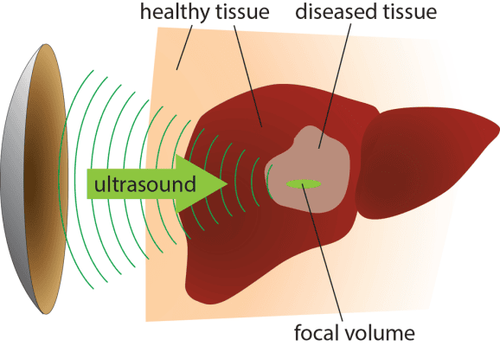This is an automatically translated article.
Posted by Master, Doctor Mai Vien Phuong - Department of Examination & Internal Medicine - Vinmec Central Park International General Hospital
As someone living with chronic constipation, you may sometimes feel like your only treatment option is going in the exact opposite direction. In fact, diarrhea is not something you should - or need - to combat. Find out what you can do to ease your symptoms without going the other way altogether.
1. Treatment of constipation with conventional methods
Things to consider
Laxatives work in different ways and their effects vary from person to person. With several types and types of laxatives available to aid in the treatment of constipation, choosing the best for your body while avoiding those that are too strong takes knowledge and awareness.
Some laxatives are harsher than others and can lead to diarrhea, stomach cramps and other unpleasant side effects if you take too much. Most people don't know that it's possible to overdose on some laxatives, which can lead to kidney damage or even death.
Below is a list of over-the-counter (OTC) medications available to treat constipation and details about what can happen if you take more than necessary.
Osmotic agents
How they work: Osmotic agents draw water into your intestines from nearby tissues and help retain water in your stools, making them softer. Softer stools are easier to pass.
Examples: Some examples of osmotic agents include:
Magnesium preparations (Milk Magnesium) Polyethylene glycol PEG (Miralax) Citrate salts (Royvac) Sodium phosphate (Fleet Phospho-Soda) Glycol (Lax-A) -Day, Pegalax, Restoralax) Sorbitol Glycerin Caution: Taking too much osmotic can lead to the following side effects:
Diarrhea Abdominal cramps Dehydration Electrolyte imbalance

Osmotic laxatives should be used with caution in the elderly and in people with kidney problems because of the risk of dehydration and electrolyte imbalance.
Additionally, the U.S. Food and Drug Administration (FDA) has issued a Trusted Source warning about the risk of kidney damage from sodium phosphate. According to the agency, sodium phosphate should be used as a single dose, taken once daily, and should not be used for more than three days. There have been reports of serious injuries and at least 13 deaths associated with taking doses higher than what is stated on the label. Drinking too much can cause dehydration, abnormal electrolyte levels, kidney damage, and even death.
FDA does not recommend sodium phosphate for the following people:
People taking medications that affect kidney function, such as diuretics or medications for fluid therapy, blood pressure medications called angiotensin receptor blockers ( ARBs) or ACE inhibitors and non-steroidal anti-inflammatory drugs (NSAIDs) People with colitis Signs of kidney injury include:
Decreased urine output Drowsiness Slowness Swelling of ankles, feet and legs your feet Seek help right away if you have any of these symptoms after taking a laxative containing sodium phosphate.
Stool softeners
How they work: Stool softeners add water to the stool to soften the stool and make it easier to pass.
Example: Examples of stool softeners include docusate sodium (Colace, Docusate, Surfak).
Precautions: Stool softeners can take a few days to start working. They are better at preventing constipation than treating it, but they are often gentler than other laxatives.
Long-term use of stool softeners can lead to electrolyte imbalance. Electrolytes include sodium, magnesium, potassium, calcium, and chloride. They help regulate several functions in your body. Electrolyte imbalances can lead to weakness, confusion, seizures, and irregular heartbeats.
Bowel stimulants
How it works: Stimulant laxatives work by causing the intestines to contract and move stool accordingly. Examples: Some examples of bowel stimulants include
Senna (Senokot) Bisacodyl (Ex-Lax, Dulcolax, Correctol)

Precautions: Stimulants are the most powerful laxatives. They only take a few hours to start working. Taking too much stimulant laxatives can lead to:
Abdominal pain Severe diarrhea Nausea Fatigue Do not take stimulant laxatives regularly. Taking them for a long time can change the tone of the large intestine and cause it to stop working properly. If this happens, your colon may become dependent on laxatives for bowel movements. Regular use can also change your body's ability to absorb important vitamins including vitamin D and calcium. This can lead to weakening of your bones.
Lubricants
How they work: Lubricants work by coating your stools and intestines to prevent dehydration. They also lubricate your stool so it moves more easily.
Example: Mineral oil is a laxative lubricant.
Precautions: You should not use lubricants for longer than a week. They can interfere with your body's ability to absorb fat-soluble vitamins (vitamins A, D, E, and K). They can also affect how your body absorbs certain medications.
Rectal stimulants
How they work: Rectal stimulants can be given as an enema, which delivers fluid into your rectum. They also come in suppositories, which are solid pills that dissolve or melt after you put them in your rectum. They work by triggering intestinal muscles to contract and remove stool or draw water into your intestines.
Example: Rectal stimulants have the same active ingredients as oral stimulants, except they are dosed through a suppository or enema instead of an oral medication. Examples include bisacodyl (Ex-Lax, Dulcolax, Fleet).
Caution: Side effects of rectal stimulants include irritation, burning, rectal bleeding, cramping, and stomach pain.
You also need to be very careful if a rectal dose does not produce a bowel movement. If the dose is retained in the rectum, it can lead to dehydration and dangerous changes in electrolyte levels. Contact your doctor immediately if a rectal irritant stays in your body for more than 30 minutes.
Fluid stimulants
How they work: Adequate fluid intake is required in the body to prevent constipation. This medicine works by helping the small intestine to release the right amount of fluid based on the food you eat.
Example: Plecanatide (Trulance) was recently approved by the FDA for the treatment of constipation.
Precautions: A major side effect of Trulance is diarrhea, which can be serious. Children under six years of age should not use this medicine because of the risk of bowel obstruction.

2. Tips to prevent side effects
Now that you know the risks and side effects of laxatives, the next step is to learn what you can do to avoid them. Here is a list of best practices for staying safe while treating constipation problems.
Read labels carefully. Carefully check the dosage. Do not combine two or more different laxatives. Check with your doctor or pharmacist to make sure laxatives don't interact with medications you're taking. Patience. Laxatives take time to start working. Do not take another dose earlier than what is stated on the product label. Drink a lot of water. Do not take stimulant laxatives regularly. Keep all medications out of the reach of children. If you are pregnant or have kidney problems, check with your doctor before taking a laxative.
3. Gentler Ways to Treat Constipation
Although they take longer to work, gentler constipation treatments than laxatives are available. These methods are also better as a permanent solution.
Change your diet
The simplest way to cure constipation is to eat more foods rich in fiber. Slowly add the following foods to your diet: whole wheat bread, fruit, green vegetables, oats, carrots,...
Try not to eat processed fast food and junk food. fast, as well as too much meat and milk. These foods have very little or no fiber at all.
Increase your fluid intake
Another simple remedy for constipation is to increase your intake of water and other fluids. Aim for at least 1.5 liters per day or more. Also, limit caffeine and alcohol intake. This can lead to dehydration.
Increase movement
Being sedentary slows down your bowels. If you're not very active right now, try to find ways to include more movement in your life. Take the stairs instead of the elevator, walk instead of using the car, park your car away from the office so you have to walk a bit, or try taking regular breaks from work to get up and get around. Do some form of exercise daily, like jogging, walking, swimming, yoga, Pilates, or cycling.
Conclusion
Unless otherwise directed by your doctor, remember that laxatives are for short-term use only. Always read the label and never take more than what is directed on the label. You run the risk of dangerous side effects both when you take too many laxatives at once and also when you take them too often. Overuse of laxatives can lead to serious problems with bowel movements as well as electrolyte imbalances.
You should take a laxative every now and then when you just need to relieve your constipation. For a long-term solution, though, make sure you're also adding plenty of fiber to your diet, increasing physical activity, and drinking plenty of water. If your constipation problem continues for more than a few months, seek your doctor's advice.
Department of Endoscopy - Gastroenterology is one of the key specialties at Vinmec International General Hospital. For timely examination, advice and treatment of digestive diseases, you can contact Vinmec Health System nationwide or register online on the website for service.
Please dial HOTLINE for more information or register for an appointment HERE. Download MyVinmec app to make appointments faster and to manage your bookings easily.
ReferencesEating, diet, & nutrition for constipation. (2014, November) niddk.nih.gov/health-information/digestive-diseases/constipation/eating-diet-nutrition Laxatives. (2016, June 20) nhs.uk/conditions/laxatives/Pages/Introduction.aspx Low, Alan. (n.d.). Treating constipation with laxatives badgut.org/information-centre/a-z-digestive-topics/treating-constipation-with-laxatives/ Mayo Clinic Staff. (2014, June 6). Over-the-counter laxatives for certain constipation: Use with caution mayoclinic.org/diseases-conditions/constipation/in-depth/laxatives/art-20045906 Use laxatives with caution. (2016, February 9) fda.gov/ForConsumers/ConsumerUpdates/ucm379440.htm U.S. Food and Drug Administration. (2017, January 19). FDA approves Trulance for chronic idiopathic constipation [News release] fda.gov/NewsEvents/Newsroom/PressAnnouncements/ucm537725.htm














